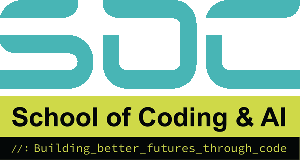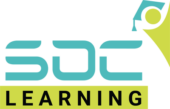Introduction
Often, students struggle to understand the AQA A-Level Computer Science coursework. Whether you’re one of the students striving for high grades or a teacher helping students through the AQA maze, the coursework components can be confusing and thus stressful, but it shouldn’t be.
In this blog, we’ll lead you through the AQA A-Level Computer Science coursework guide, providing practical methods, pro tips, and insider secrets to help you get the best grades possible. From selecting the correct project to writing your final evaluation, we bring to you everything you need to handle coursework confidently, here.
Let’s decode this together, step by step!
Why the AQA A-Level Computer Science Coursework Matters?
The coursework, or Non-Exam Assessment (NEA), makes up 20% of your final A-Level grade. That’s a large amount – and it’s within your control. Unlike tests, this is your opportunity to shine with a real-world software project that demonstrates your programming, problem-solving, and analytical abilities.
Key Coursework Facts:
- Weightage: 75 marks (20% of A-Level)
- Length: About 2,000 words of documentation plus code.
- Deadline: Usually submitted during the Spring Term of Year 13.
- Languages permitted: Any high-level language (e.g., Python, Java, C#).
- Focus: Solving a real-world problem using programming.
Step-by-Step: AQA A-Level Computer Science Coursework Guide
1. Choose a Strong Project Idea (The Game-Changer!)
Your idea should address a real-world issue. The best projects are personal, meaningful, and distinctive. Think about:
- Automate a school task
- Developing a booking system for a local business
- Designing a game using data structures and algorithms.
- Developing a mobile app or web-based tool.
Top Tip: Choose a challenge that is both technical and feasible for your talents and timetable.
2. Define the Problem Clearly
Begin by clearly defining the outline of your project:
- What is the problem?
- Who are the end users?
- What should your software accomplish?
Your analysis part should extensively investigate the situation. Include user stories, requirements, and possible limits.
Pro Tip: 35% of students lose marks because of inadequately stated problem scopes. Don’t fall into this trap; clarity is crucial!
3. Plan Like a Pro
Before beginning your coding project, plan out your approach:
- Use Gantt charts or Kanban boards.
- Detail your timeframe and milestones.
- List your tools and technology.
Pro Tip: Essential tools include Trello, GitHub Projects, and Lucidchart.
4. Design Smart Solutions
Design is where your structure and logic come to life. It says a lot about your creative aptitude and thought process. Thus include:
- Pseudocode
- Flowcharts
- Data models
- Class diagrams (if OOP)
Think about modularity, reusability, and user interface design. Explain why you made each design choice.
5. Code with Purpose
Now, it’s time to code—but stay organised:
- Comment your code thoroughly.
- Use version control (Git).
- Follow industry-standard processes.
Pro Tip: AQA accepts any language, although Python is preferred for its simplicity and flexibility.
6. Test Like a Tester
Testing isn’t just ticking boxes; it’s about demonstrating your understanding:
- Unit testing
- Integration testing
- User Acceptance Testing
- Boundary and incorrect data tests
Pro Tip: Add screenshots and test tables. Clearly explain what works, what does not, and how you resolved concerns.
7. Evaluate With Honesty and Insight
This area is for reflecting on your efforts.
- What went well?
- What improvements would you make?
- How did your solution fulfil the requirements?
- Did user input influence your approach?
Pro Tip: A strong evaluation indicates maturity, growth, and understanding of the entire development cycle.
8. Organise Your Documentation
The structure you should follow for your documentation should include:
- Analysis
- Design
- Implementation
- Testing
- Evaluation
Use clear headings and consistent formatting, as well as code snippets, screenshots, and diagrams.
Pro Tip: Remember that the NEA is evaluated based on both the write-up and the program; presentation is important!
9. Keep It Original
Plagiarism is a serious problem in schoolwork. Copying is going to hamper your performance. So make sure:
- You create your code.
- You cite any inspiration and libraries used.
- You describe your mental process clearly.
Pro Tip: AQA utilises plagiarism-detecting techniques. Always be authentic.
10. Get Feedback and Iterate
Don’t wait till it’s perfect; share early drafts with your teacher or classmates. Use input to improve weak areas. Final Checks:
- Are all sections completed?
- Is the program functional?
- Is the documentation thorough?
Pro Strategies for Top Marks
Use real user feedback: Incorporate user feedback into your design and evaluation by conducting interviews with potential users.
Stick to the specifications: Always keep AQA’s marking scheme handy and use it to tick off requirements as you go.
Showcase your improvement: Show how your coding and problem-solving skills improved over time.
Tell a story: Make your documentation narrative-driven; explain your thought process and challenges.
Conclusion:
Navigating the AQA A-Level Computer Science coursework may appear difficult, but with the correct approach, it is your best chance to demonstrate your creativity, logic, and technical competence. You can set yourself up for success by planning ahead of time, coding cleanly, and documenting thoroughly.
Remember that this isn’t just an assignment. It’s a springboard for your career in technology.
Frequently Asked Questions (FAQs)
A real-world problem is any difficulty that a user may encounter and can be resolved through programming. This could include education, entertainment, business, health, or personal organisation.
Of course, Python is a popular choice because of its simplicity and extensive library. AQA supports any high-level language, so choose one you’re comfortable with.
The most common mistakes would include:
- Choosing ambiguous or over complex problems
- Weak documentation
- Lack of testing evidence
- Plagiarised code or templates
- No user feedback or real evaluation
Ideally, begin brainstorming and preparing before the conclusion of Year 12. The earlier you start, the more time you’ll have to perfect and polish your work.








